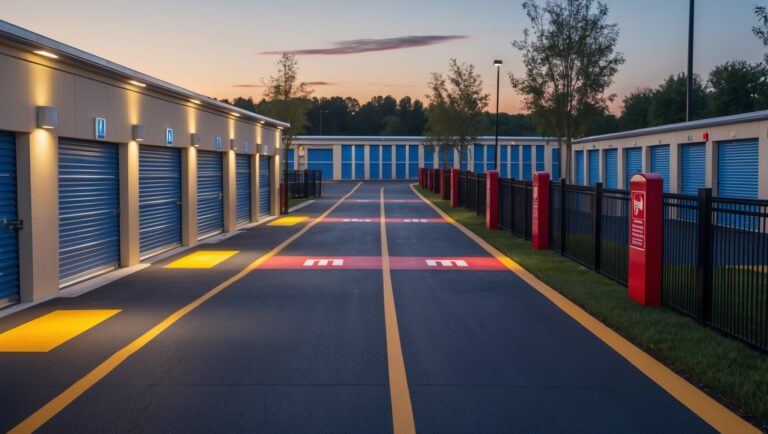First-Time Movers: 12 Beginner Mistakes to Dodge for a Stress-Free Move
Introduction: Why Avoiding Rookie Mistakes Matters in Your First Move
Moving for the first time is an exciting milestone, but it can also be one of life’s most stressful events. Whether you’re transitioning to your own apartment, relocating for a job, or moving with your family, the process involves countless decisions and potential pitfalls. Many first-time movers underestimate the complexity of planning, packing, and transitioning to a new home, leading to avoidable headaches, unexpected expenses, and even damaged belongings. The good news: with the right knowledge, you can sidestep the most common beginner mistakes and enjoy a far smoother move.
This comprehensive guide dives into the top 12 mistakes first-time movers make—and, most importantly, how to avoid them. From underestimating time and costs to poor packing strategies, we’ll equip you with actionable steps and insider tips. You’ll learn how to create a realistic timeline, keep your budget in check, choose the right supplies, and protect both your belongings and your sanity. Whether you’re hiring professionals or going the DIY route, these insights will help you move smarter, not harder. Let’s set you up for a seamless, stress-free moving experience.
1. Underestimating the Time Required
Why This Happens
Many first-time movers assume they can pack up their home in a weekend. They forget to factor in sorting, decluttering, organizing, and the actual logistics of moving day. This miscalculation leads to rushed packing, overlooked items, and unnecessary stress.
How to Avoid It
- Start Early: Begin planning at least 6–8 weeks ahead. Even small apartments can take significant time to pack properly.
- Make a Schedule: Break tasks down by week—declutter first, then pack non-essentials, and save daily-use items for last.
- Set Realistic Daily Goals: Tackle one room or category at a time to avoid feeling overwhelmed.
2. Failing to Create a Detailed Inventory
Why This Happens
Without an inventory, it’s easy to lose track of what you own. This leads to misplaced boxes, forgotten valuables, and confusion when unpacking.
How to Avoid It
- List Everything: As you pack, write down what’s in each box or use a moving app to log contents and box numbers.
- Photograph Valuables: Take pictures of electronics, jewelry, and fragile items for both insurance and identification purposes.
- Label Clearly: Label each box with its contents and destination room for efficient unloading.
3. Skipping the Decluttering Process
Why This Happens
First-time movers often pack everything, including unused or unwanted items, thinking it will save time. In reality, moving clutter increases labor, cost, and stress.
How to Avoid It
- Sort Ruthlessly: Create piles for keep, donate, sell, and toss. Be honest—if you haven’t used it in a year, consider letting it go.
- Host a Sale: Sell valuable but unwanted items online or at a garage sale to offset moving costs.
- Donate Responsibly: Research local charities or shelters that accept furniture, clothing, and household goods.
4. Ignoring the True Costs of Moving
Why This Happens
Many first-timers only budget for the moving truck or professional movers, overlooking expenses like packing materials, fuel, meals, storage, and utility deposits.
How to Avoid It
- Create a Comprehensive Budget: Factor in all potential costs, including supplies, insurance, travel, cleaning, and temporary housing if needed.
- Get Multiple Quotes: Compare rates from several moving companies. Don’t forget to check for hidden fees such as stair carries, long carries, or packing charges.
- Set Aside a Contingency Fund: Reserve 10–15% extra for unexpected expenses.
5. Choosing the Wrong Moving Day
Why This Happens
Popular move-out dates (end of month, weekends, holidays) book quickly, leading to higher prices and limited availability.
How to Avoid It
- Book Early: Reserve movers or rental trucks at least 4–6 weeks ahead, especially if moving during peak season (late spring through summer).
- Consider Off-Peak Days: Mid-week or mid-month moves are often cheaper and less stressful.
- Check Local Calendars: Avoid moving on days with local events or construction that could complicate logistics.
6. Skimping on Packing Materials and Tools
Why This Happens
In an effort to save money, some first-time movers use flimsy boxes, skip bubble wrap, or forgo proper tools. This can result in broken items and injuries.
How to Avoid It
- Invest in Quality Supplies: Use sturdy, uniform boxes, packing tape, bubble wrap, and furniture pads. Specialty boxes (wardrobe, dish, TV) are worth the extra cost.
- Don’t Forget Equipment: Rent or borrow a hand truck, moving straps, and furniture sliders—these save backs and time.
- Pack Smart: Fill boxes fully to prevent collapse, but avoid making them too heavy. Use small boxes for books and heavy items, large boxes for lighter goods.
7. Forgetting to Update Critical Information
Why This Happens
Address changes are often an afterthought. Overlooking this step can delay mail, disrupt services, and even create security risks.
How to Avoid It
- Change Address Early: File a change of address with the postal service 2–3 weeks before moving.
- Update Utilities and Services: Schedule disconnect/connect dates for electricity, water, internet, and more.
- Inform Key Contacts: Notify banks, employers, insurance providers, schools, and subscription services of your new address.
8. Overlooking Insurance Needs
Why This Happens
Many first-time movers assume their belongings are automatically covered during a move, but standard policies may not apply in transit or in storage.
How to Avoid It
- Review Your Policies: Check renter’s or homeowner’s insurance for moving and storage coverage.
- Ask About Liability: If hiring movers, understand their liability options and consider purchasing additional protection.
- Get Storage Insurance: If using a storage facility, opt for coverage for the duration your belongings are stored.
9. Packing Procrastination and Poor Organization
Why This Happens
Last-minute packing leads to chaos, inefficient box loading, and increased risk of damage or loss.
How to Avoid It
- Pack by Category and Room: Group similar items together and pack room by room for easier unpacking.
- Label and Number Boxes: Use a numbering system that matches your inventory list. Mark boxes with special instructions (fragile, this side up, etc.).
- Prepare an Essentials Box: Pack a box with toiletries, chargers, a change of clothes, and important documents to access immediately upon arrival.
10. Not Measuring Furniture and Doorways
Why This Happens
It’s easy to assume everything will fit in the moving truck or through your new home’s entryways. This mistake can lead to frustrating, time-consuming problems on moving day.
How to Avoid It
- Measure Everything: Note the dimensions of large furniture and compare them to doorways, stairwells, and elevators at both locations.
- Disassemble When Possible: Take apart bed frames, tables, and shelves in advance; keep hardware in labeled bags taped to the furniture.
- Plan Load Order: Load larger items first and strategize the placement for safe, efficient transport.
11. Neglecting Health and Safety Precautions
Why This Happens
With so much to do, first-time movers often forget basic safety practices, leading to avoidable injuries and property damage.
How to Avoid It
- Lift Properly: Bend your knees, not your back, and use appropriate equipment for heavy items.
- Clear Pathways: Keep walkways free of debris, cords, and loose packing material to avoid trips and falls.
- Stay Hydrated and Take Breaks: Moving is physically demanding—don’t skip meals or rest.
12. Failing to Confirm and Communicate with Movers
Why This Happens
Assuming everything is set with your moving company or helpers can result in miscommunication, late arrivals, or even no-shows.
How to Avoid It
- Confirm Details: Double-check moving dates, addresses, inventory, and special requirements a week in advance.
- Provide Clear Instructions: Give movers floor plans or parking instructions. Communicate any building rules or time restrictions.
- Have a Backup Plan: Know what you’ll do if movers cancel or are delayed—keep a list of alternate providers or friends who can help in an emergency.
Conclusion: Master Your Move by Learning from Common Mistakes
Your first move doesn’t have to be a trial by fire. By understanding and actively avoiding these 12 common mistakes, you’re already well ahead of the average first-timer. Preparation is your most valuable tool—start early, stay organized, and never underestimate the power of a good checklist. Remember, moving is more than just transporting boxes; it’s about creating a smooth transition to your next chapter. Invest a little extra time in planning, budgeting, and safety, and you’ll avoid the last-minute chaos that turns moving day into a nightmare.
Don’t be afraid to ask for help, whether from friends, family, or professionals. Use technology to your advantage with inventory apps, digital checklists, and online resources. Most importantly, be flexible—unexpected hiccups can happen, but with a solid plan, you’ll be able to adapt and keep moving forward. The result? A smoother move, fewer broken or lost belongings, and a much more positive start in your new home. Happy moving!






